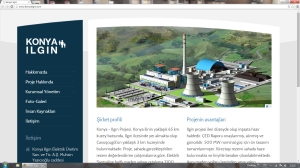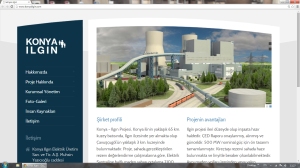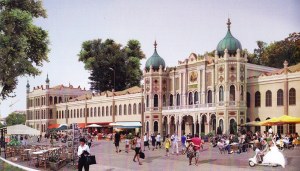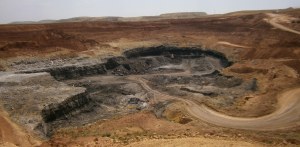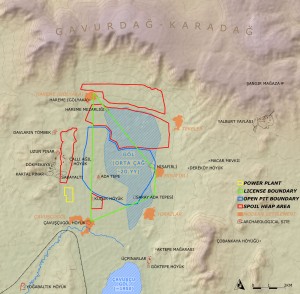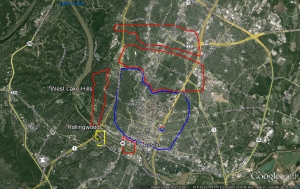In November 2013, six Middle Eastern Studies graduate students at UT Austin did projects to map the connections of the objects reportedly from the Kalmakarra Cave in western Iran. Known as the ‘Western Cave Treasure,’ the objects are mostly forgeries but nonetheless show workings of the art market and its political repercussions.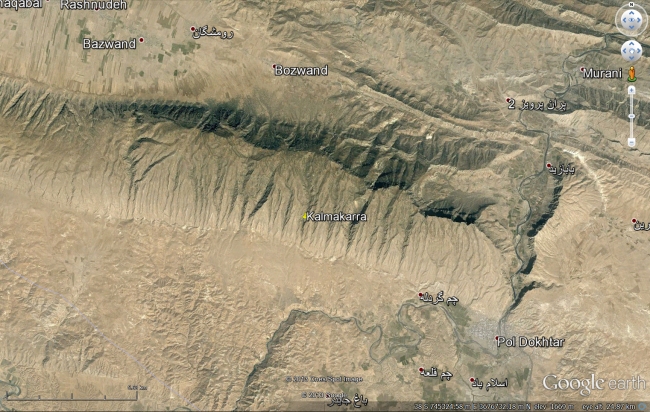
Their representations:
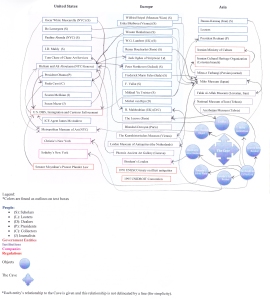
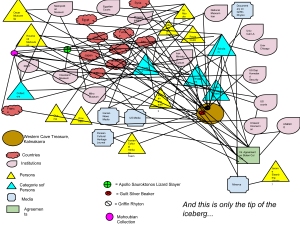 (Emma Davenport)
(Emma Davenport)
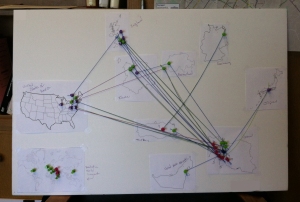 (Laura Partain)
(Laura Partain)
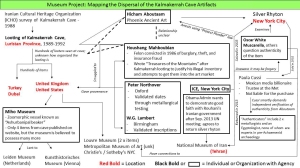
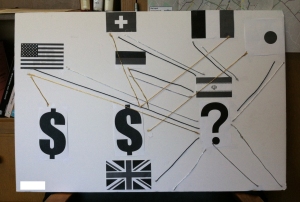 (Patrick Higgins)
(Patrick Higgins)
A screenshot from a Google Maps Engine map:
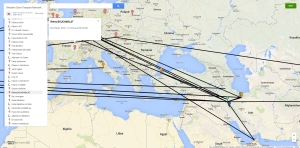
https://mapsengine.google.com/map/edit?mid=zepwWELE0xfk.kbb7tXbnR36E
Their sources:
Melikian, Souren. 1998. “Debate rages over antiquities: cultural ecology:saving the past,” The New York Times, January 10. http://www.nytimes.com/1998/01/10/style/10iht-york.t_0.html
Boucharlat, Rémy. 2000. “Un torque achéménide avec une inscription grecque au Musée Miho (Japon),” Comptes rendus de l’Académie des Inscriptions et Belles-Lettres de Paris 144:1371-1437. [I have no doubt that this object is a fake or real/half mixture. Boucharlat treats the object as real.]
Lawergren, Bo. 2000. “Incongruous musical instruments on an alleged Assyrian beaker,” Source: Notes in the History of Art 20:38-42.
Muscarella, Oscar White. 2000. “Excavated in the bazaar: Ashurbanipal’s beaker,” Source: Notes in the History of Art 20:29-37.
Albenda, Pauline. 2001. review of Ein vergoldeter Silberbecher der Zeit Assurbanipals im Miho Museum: Historische Darstellungen des 7. Jahrhunderts v. Chr, by Erika Bleibtreu, Journal of the American Oriental Society 121:145-6. [New York independent scholar thinks beaker is a fake.]
Henkelman, Wouter F.M. 2003. “Persians, Medes and Elamites. Acculturation in the Neo-Elamite period,” in Continuity of empire (?) Assyria, Media, Persia; proceedings of the International Meeting in Padua, 26th-28th April 2001, Padova: S.a.r.g.o.n., 73-123, pls. [Scholar studies, publishes, and increases the value of art market objects. Skim pages 106-119.]
Muhly, J.D. 2004. review of Continuity of empire (?) Assyria, Media, Persia; proceedings of the International Meeting in Padua, 26th-28th April 2001, Bryn Mawr Classical Review 11.11. http://bmcr.brynmawr.edu/2004/2004-11-11.html [paragraph 16 onwards]
van Rijn, Michel. [no date]. “A report on the ‘Western Cave Treasure’ (Kalmakarreh Cave, Luristan),” reposting of van Rijn’s http://www.michelvanrijn.nl report: http://tech.dir.groups.yahoo.com/neo/groups/AncientWeapons/conversations/topics/689
Treister, Mikhail Yu. 2009. “Silver phialai from the Prokhorovka burial-mound no. 1,” Ancient Civilizations from Scythia to Siberia 15:95-135. [Scholar compares excavated artifact to art market object (fake?) and increases the value of the art market object. Read pages 117-8.]
Klein, Melissa. 2010. “Rogue’s gallery — the Queens warehouse that holds a fortune in stolen art,” New York Post, June 6. nypost.com/2010/06/06/rogues-gallery-the-queens-warehouse-that-holds-a-fortune-in-stolen-art/
Treister, Mikhail. 2010. “‘Achaemenid’ and ‘Achaemenid-inspired’ goldware and silverware, jewellery and arms and their imitations to the north of the Achaemenid Empire,” in Achaemenid impacts in the Black Sea; communication of power, ed. J. Nieling and E. Rehm. Aarhus: Aarhus University Press, 223-79. [Scholar again compares excavated artifact to art market object (fake?) and increases the value of the art market object. Read pages 236-7.]
Muscarella, Oscar White. 2013 [2012]. “An unholy quartet: museum trustees, antiquity dealers, scientific experts, and government agents,” The ASOR Blog, October 17. http://asorblog.org/?p=5960
FGP/FGP. 2013. “Iran to make documentary on returned Persian griffin,” PressTV, October 5. http://www.presstv.com/detail/2013/10/05/327706/iran-to-film-returned-ancient-artifact/
Barford, Paul. 2013. “Obama’s ‘Kalmakarra Cave’ rhyton, Not what it seems?” Portable Antiquity Collecting and Heritage Issues, October 9. http://paul-barford.blogspot.com/2013/10/obamas-kalmakarra-cave-rhyton-not-what.html (accessed November 8, 2013).
Mazur, Suzan. 2013. “A fake? – ‘America’s souvenir to the Iranian people,” Scoop, October 9. http://www.scoop.co.nz/stories/HL1310/S00063/a-fake-americas-souvenir-tothe-iranian-people.htm
Mazur, Suzan. 2013. “ICE ‘Incompetence’ in Iranian griffin debacle,” Scoop, October 15. http://www.scoop.co.nz/stories/HL1310/S00114/ice-incompetence-iniranian-griffin-debacle.htm
We also glanced at Bleibtreu’s monograph in seminar:
Bleibtreu, Erika. 1999. Ein vergoldeter Silberbecher der Zeit Assurbanipals im Miho Museum; historische Darstellungen des 7. Jahrhunderts v. chr. Wien: Institut für Orientalistik der Universität Wien.
